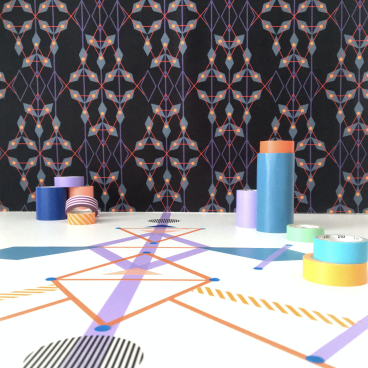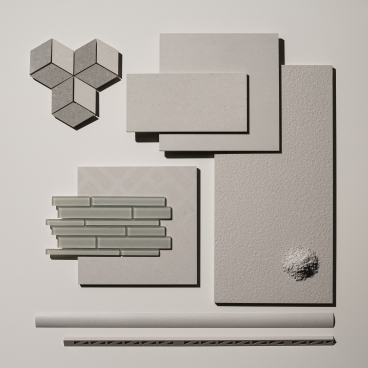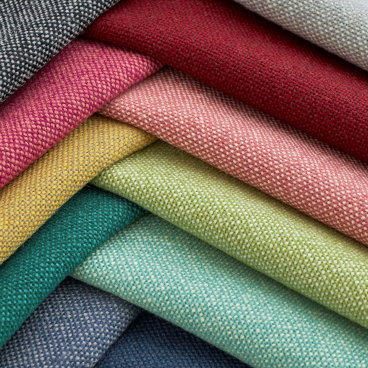Carolyn Raff on biomaterials, sustainable manufacturing and baking sequins.
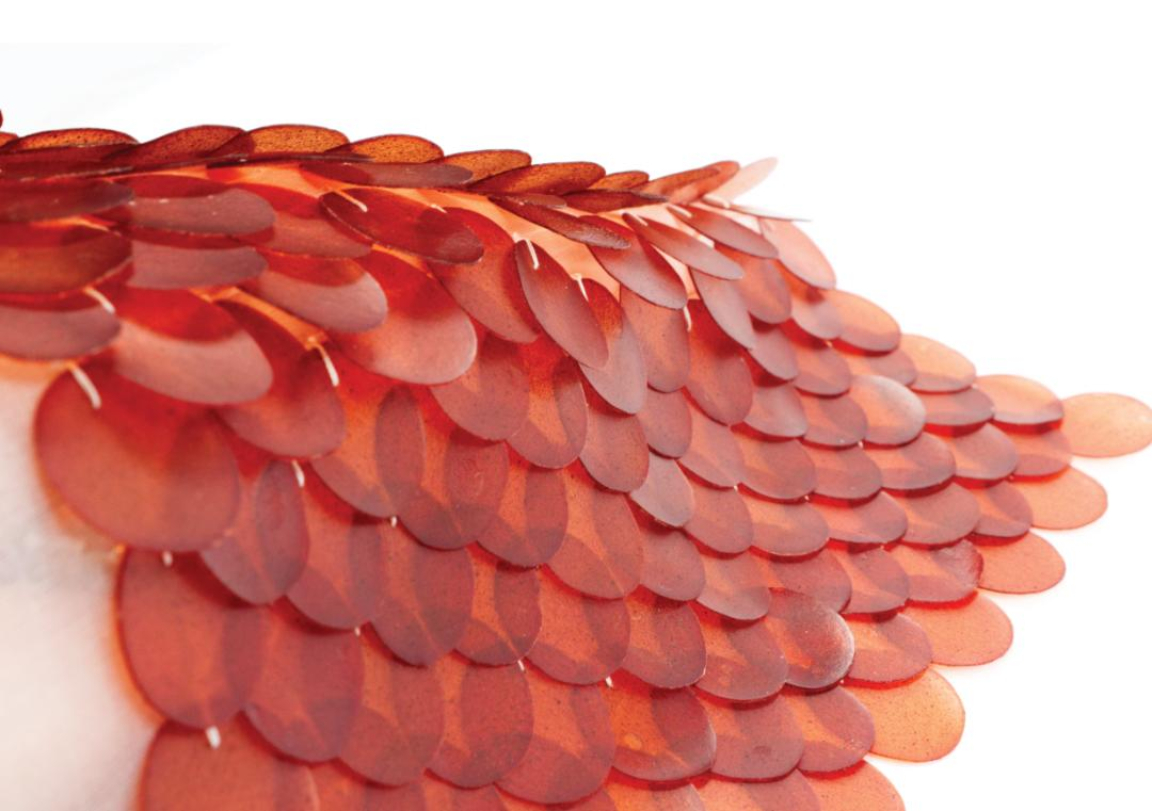
Carolyn Raff is the brainchild behind "An ocean full of possibilities", an experimental and conceptual design approach based on rapidly renewable raw materials from the sea.
She graduated from the State Academy of Fine Arts in Stuttgart in 2017 after completing a textile design course. Since then, she has worked as a freelance designer, securing a scholarship for her unique project from the State of Baden-Württemberg.
With biomaterials firmly under the design sector's spotlight at present, we were keen to catch up with Carolyn about her fascinating, and beautiful, work. So, we sat down to discuss all things sustainable sequins. Here's what she had to say...
‘Biomaterial’ is experiencing a lot of publicity at the moment, and was named Material of the Year at the London Design Fair. Have you always had an interest in this field, or is it something you came to through your studies?
"In 2014, I had the chance to do an Erasmus Semester at the Royal Art Academy in Copenhagen and I was amazed at how strong the focus on sustainability was in Denmark, and how far it had been embedded in the teaching method at the Academy.
"After I came back to Stuttgart, I started focusing on natural materials to work with. I discovered algae as a fast growing resource and stuck with it, due to the endless possibilities the organisms offer."
Can you talk us through your making process?
"My studio is based in Stuttgart, far away from the ocean. So I had to improvise and try to get my hands on products that are algae based and already available on the market. I discovered that the food industry has a lot to offer when it comes to algae or extracted products from algae. I started working with Agar because you can buy it in every supermarket and it is a material that can be easily manipulated.
"To create a certain colour range within the algae based biopolymer, I only use natural, mainly plant based colours. I started dying with algae like Spirulina and ended up recycling leftover dye baths from other textile and fashion designers that only use natural dyes in their process. With this procedure I can reuse the dye and water that would ordinarily be poured down the drain after the textiles are dyed."
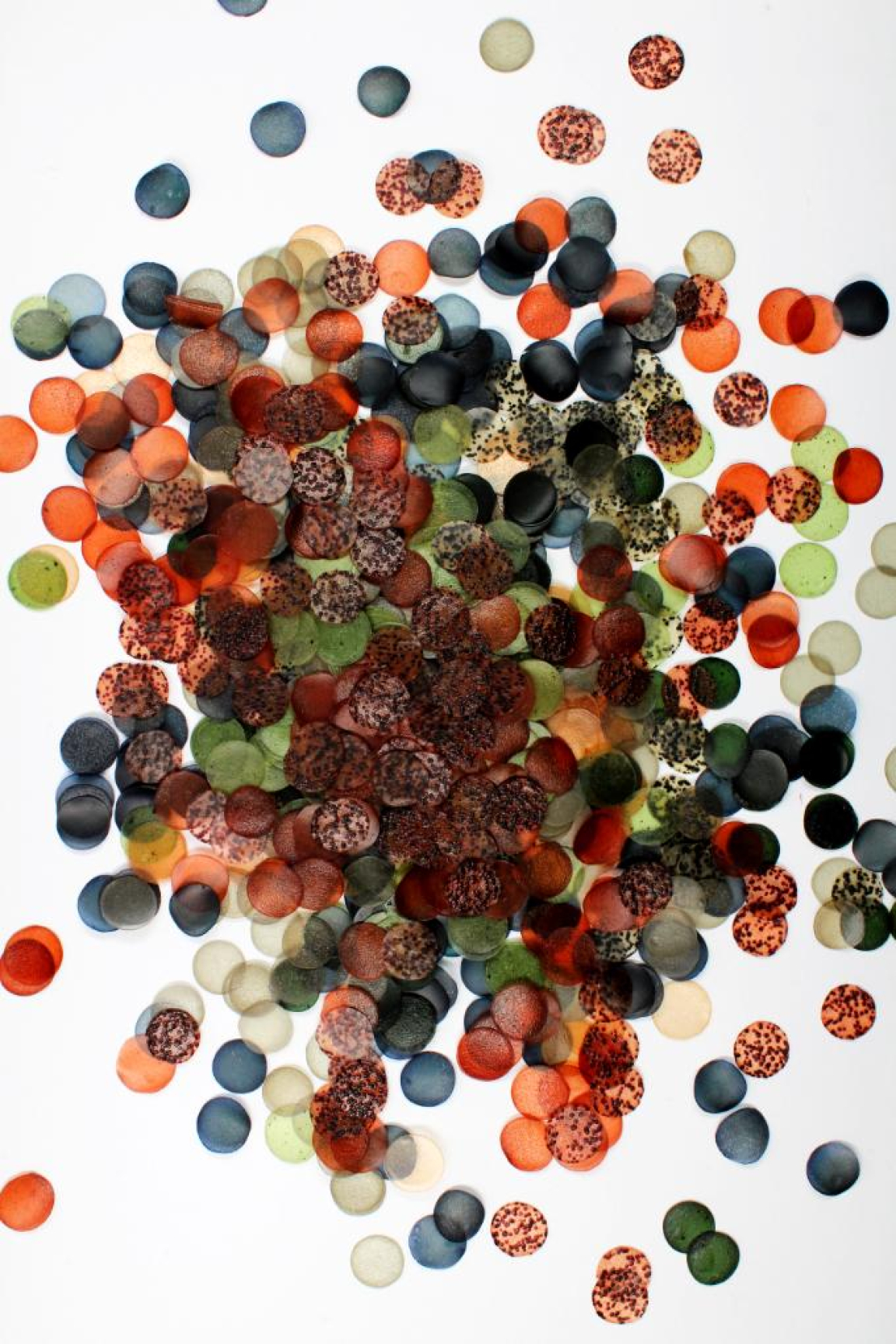
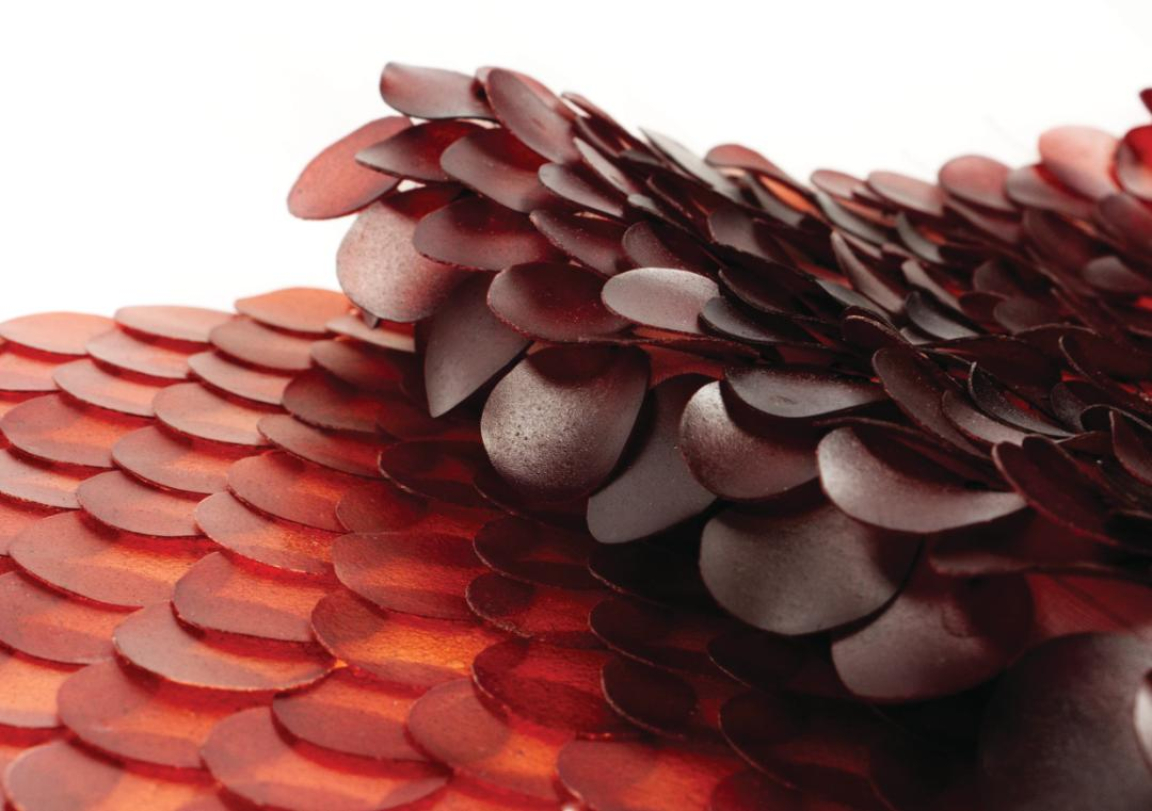
You predominantly work with materials from the sea - is there a particular reason for this?
"The focus is to work with materials and resources that are biodegradable and natural. I also try to use materials that are either a byproduct of an already existing manufacturing process or resources that can be harvested with the least possible impact on the ecosystem.
"The second reason is the organisation for my experimental and unconventional way of researching and designing, it is really important to set yourself some boundaries. It is easier to get crazy with experiments in the field of material research and sustainability when you already have decided on what kind of material and with what resources you want to work with. When the system is set up, you can start digging deeper into the topic and push your own boundaries."
Can you tell us more about “An ocean full of opportunities”?
"An ocean full of opportunities started as a project during my studies and is now a research project, supported by the State Academy of Fine Arts and Design and financed by a postgraduate scholarship from Ministry of Science, Research and Arts Baden Württemberg.
"I collect ideas and do experiments with bio based materials and collect visual impressions of my process and show it on Instagram. It is an easy tool to communicate with other designers that are interested in sustainability. It should be used as a tool and an encouragement to start experiments on your own."
The material itself is the biggest inspiration. You can turn unexpected outcomes into something useful.
Your work is very beautiful, how important is it for the form to match the function?
"My own definition of function in that sense is the idea of biodegradable and healthy materials for fashion and textiles in general. Therefore the materials I‘m working with have to follow the function of biodegradability and the design will follow. The creativity to make something that speaks to all senses comes within the process. My goal is to create something that is ecological and appealing at the same time."
Who is your target customer? And how do you envisage your work should be used?
"I mainly work with textile and fashion designers, but the product has great potential in many areas. There are almost endless possibilities to work with this algae based biopolymer. I‘m trained as a textile designer so my way of working with it is influenced by my passion for embroidery and textile manipulation. But it can also be used in the context of product design, packaging and much more."
Are there any materials you like working with best? And why?
"My absolute favourite materials to work with are Agar and Carrageenan. Both powders are algae based vegan gelatine substitutes, that forms jelly when heated up. It is just fascinating to work and play around with it. It is easy to start experimenting with it, it is all natural and you don‘t necessarily need a laboratory or a workshop to do so."
Who or what is your biggest inspiration?
"The material itself is the biggest inspiration. You can turn unexpected outcomes into something useful. When I started baking the sequins I hoped that the material would stay flat. Instead it created a three dimensional form.
"At first I had no idea what to do with the result but the sequins inspired me. From there on I started to do more experiments that change the surface and structure of the biopolymer. The results are always interesting and a lot of fun to play around with."
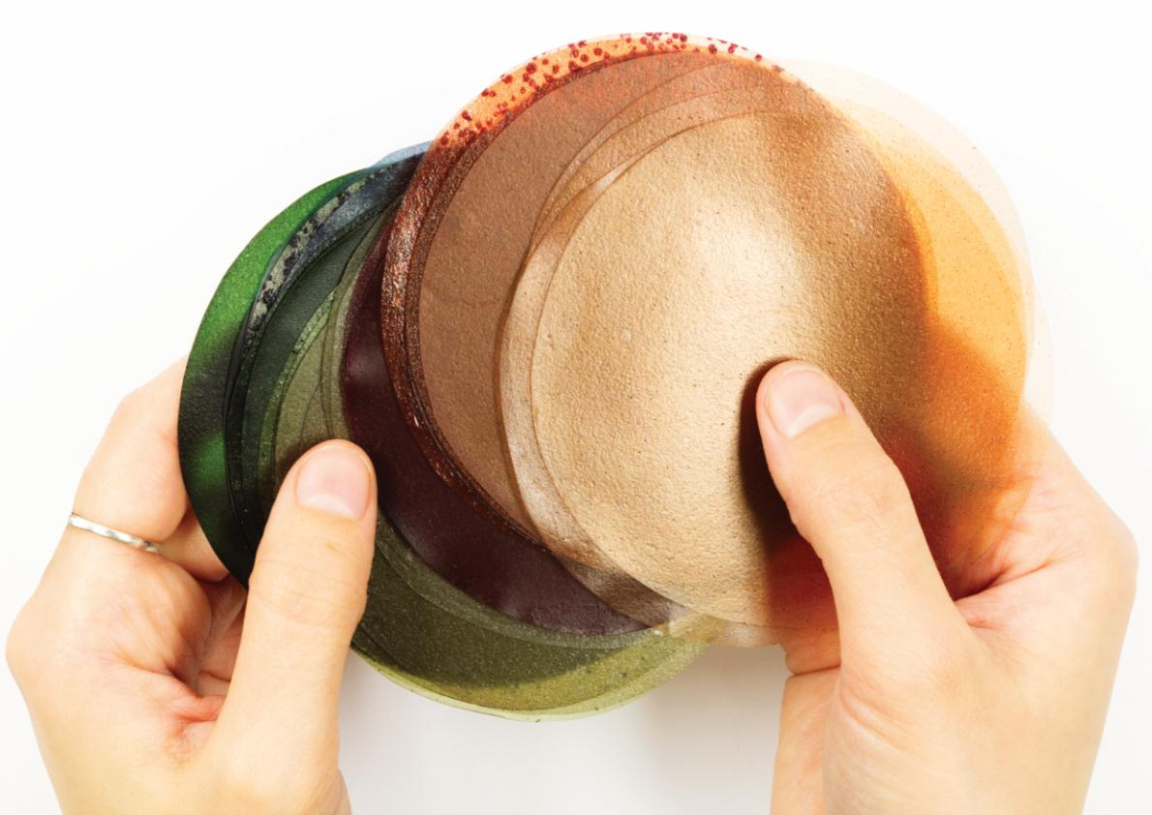
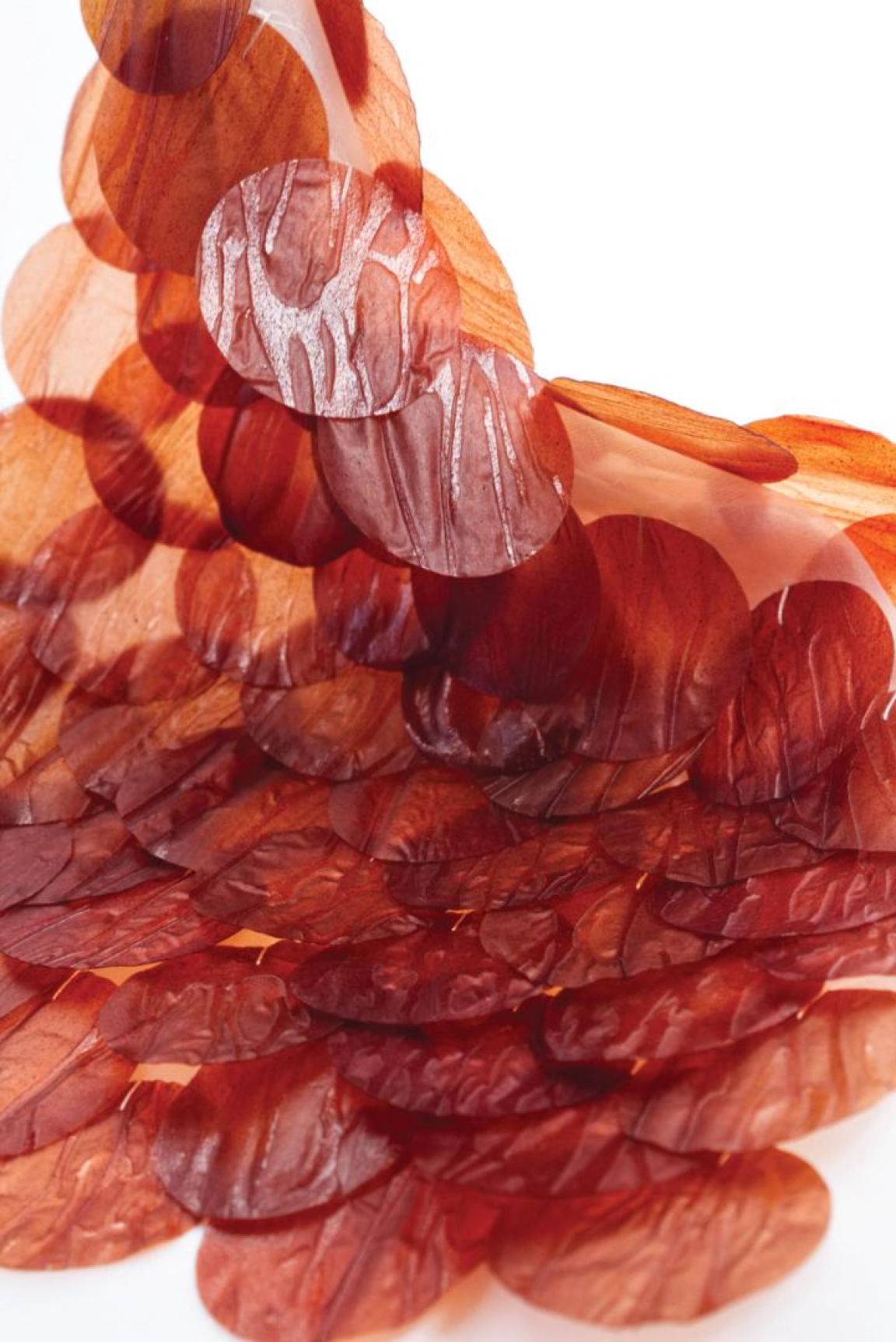
Is there a project by any of your peers that has particularly inspired you?
"There are so many talented designers and researchers that it is hard to name only one. During London Design Week 2019 I had the great opportunity to exhibit at Open Cell London, among with 25 other designers, all focused on biodesign and sustainability. It was highly inspiring to see their work and exchange the different experiences, stories and struggles that come with this new way of creating and designing sustainable materials and products."
Does your work have a signature style?
"The three dimension sequins are quite unique in their form and shape. I really like the idea that I can‘t fully control the results of this heating process and always have to come up with new ideas to apply it on textiles.
"I asked embroidery designers, Adela Fraud Alvarez, based in Copenhagen, and Franziska Wiedemann, based in Stuttgart, to work with the three dimensional sequins and I was amazed how different and unique their embroidery pieces turned out to be."
What project are you most proud of?
"An ocean full of opportunities is a project that I worked on for 18 months and I expected it to be a very traditional textile design project. But instead it turned out to be an approach to biodesign and material research. I‘m very contented with this change of focus and surprised that it completely changed my way of designing."
What are you working on currently?
"I'm working on a garment in collaboration with Nikolett Madai, a Berlin based fashion designer, specialising in a natural dyeing process with leftover turmeric and pomegranate peels. I use her leftover dye bath from dying textiles, and recycle it into biopolymer sequins. They will be applied on the turmeric dyed garment.
"We found a way of using the leftovers of a juice production based in Brandenburg and we are able to recycle the dye again within the production of the garment. I really like the idea of getting the most use out of the materials we work with and finding ways of creating sustainably made fashion, that can be bought and worn without any guilt."
And what’s next?
"To be part of the shift into a more sustainable world and healthier manufacturing process, we have to think about how to upscale the material from a state of prototype towards a industrialised process.
"The next step is to think about solutions to produce a bigger scale of water resistant but fully biodegradable and recyclable biopolymer that can be used by other designers and manufacturers to create their own sustainable ideas and products."


